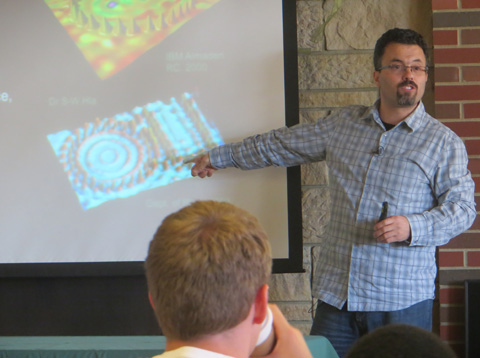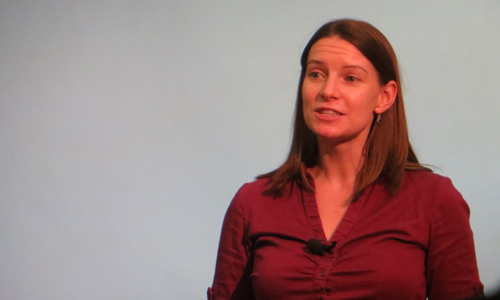From the Nanoscale & Quantum Phenomena Institute
Don’t expect nanotechnology to produce tiny robots with artificial intelligence that devour cancer cells or ropes with Carbon nanotube strands that are strong enough to build a space elevator from Earth to the orbiting stations.
These ideas are nothing but hype in the world of nanotechnology, but this science does provide tangible and real opportunities to create faster electronics and advances in medicine.
Dr. Savas Kaya, Professor of Electrical Engineering and Computer Science in the Russ College of Engineering and Technology, separated fact from fiction in his Science Café talk, Nanotechnology: Hype or Opportunity?, Oct. 9 at Ohio University. The Science Café featuring Kaya can be viewed here.
“I am trying to convince you that this is not all hype. Nanotechnology is real and here. Your cell phones and memory sticks and touchscreens have it. There is potential for solutions to age-old problems,” he said.
What advances would you like to see in your cell phone in 5 or 10 years?
While nanotechnology is not likely to provide cell phones with DNA sequencing capabilities in a few years, as one audience member requested, it can likely provide the much longer battery life that many audience members wanted.
Kaya explained that silicon chips and existing batteries could eventually be replaced by novel nanomaterials like graphene, a material discovered at the nanoscale level.
“Graphene is the strongest material on Earth, 200 times stronger than steel. Graphene is a single sheet of carbon atoms. The discovery of graphene won a Nobel prize in 2010,” he said.
Another area where nanotechnology holds promise is medicine, which has the potential to lead to smaller, more portable devices to monitor medical conditions and dispense medicines.
“There is a lot of hope, but there is also some hype. We won’t have tiny intelligent self-replicating robots that defeat cancer running through our bloodstream or elevators to space built with super-strong carbon nanotubing.
“Advances in nanotechnology are already making our lives easier and better through many portable electronic products and communication systems today, but the best is yet to come, gradually and without us noticing” Kaya reiterated.



















Comments